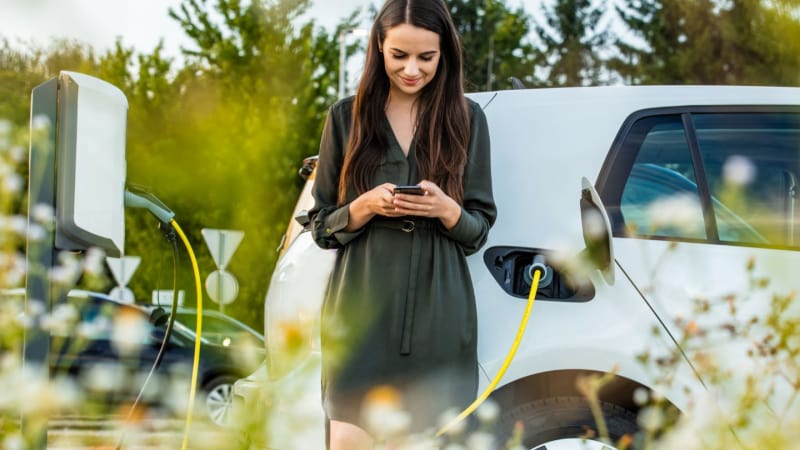EV charging stations: How the U.S. is meeting growing demand

Americans purchased 1.2 million electric vehicles (EVs) in 2023 — the most to be sold in the U.S. in a single year. Yet many Americans still have reservations about EVs. One of the biggest concerns? The lack of access to charging stations.
It's important to note that many EVs are charged at home, but public charging is still important for long-distance travel and for those whose homes don’t have this capacity.
As more and more people buy EVs, the demand for accessible charging stations is growing. In 2018, it was predicted that EV charging-energy demand could reach 53 billion kilowatt-hours by 2030 — a twenty-fold increase. Fortunately, more EV charging stations have started to pop up in the last year, and recent public and private investments in stations point to further growth.
How many EV charging stations are in the U.S.?
The number of EV charging ports nearly doubled from 2019 to 2023 — rising from 87,252 to 161,652. In the first quarter of 2023, public charging ports accounted for about 88% of all stations.
California leads the country with the most charging stations by far — the state is home to 15,622 station locations with 43,573 ports. It’s followed by New York (3,763 stations), Florida (3,261), Texas (3,039) and Massachusetts (2,888), as of January 2024.
There are far fewer charging stations in the upper Midwest, including Montana, North Dakota, Wyoming and South Dakota, probably because these states have smaller populations. Other reasons may include the region’s economic reliance on corn ethanol or the colder weather, which negatively impacts EVs’ performance.
The future of EV charging stations
While there’s already been tremendous growth of EV charging stations across the country, several factors point to even more expansion over the next few years. A trillion-dollar infrastructure bill was adopted in 2021, allocating $7.5 billion toward investments in EV charging, with a goal of building 500,000 public EV chargers by 2030.
Five million dollars of the funding will go toward building high-speed chargers every 50 miles or less along major roads, freeways and interstates across the U.S. The remaining $2.5 million is for grants to states and organizations to fill charging station gaps and build stations closer to where people live, work and shop.
Critically, 40% of the funds must go to disadvantaged communities — with the intention of bringing more charging stations to low-income neighborhoods. An Alternative Fuel Infrastructure Tax Credit was adopted to help more individuals and businesses install chargers for personal, employee or commercial use.
The results of these investments are already in play. Ohio announced the opening of its first charging station funded through the infrastructure bill in December 2023, with Vermont, Pennsylvania and Maine following suit. Since 2021, the number of public fast charging ports has increased by more than 70%.
Several auto and gas companies have announced private investments in expanding EV charging stations as well. Seven major companies are collaborating to build 30,000 new stations. BP also announced an up to $1 billion investment in EV charging across the U.S. by 2030.
Another factor pointing to the increase of EV charging stations is the growing standardization of charging ports. Multiple companies announced they’d be adopting Tesla’s charging technology last year, and Nasdaq predicts Tesla’s charging plug will become the industry standard in the U.S. in 2024. This will significantly increase the number of stations where drivers can charge their EVs.
Lastly, we may start seeing more gas stations converting fully or partially to EV charging stations. The first gas station to convert to an EV charging station opened in Takoma Park, Md., in 2019. It’s possible that many traditional gas stations will convert to charging ports over the next several years.
In summary
Although a lack of EV charging stations is one of the top concerns among prospective buyers, there’s been a boom of EV charging stations across the U.S. A combination of public and private investments and industry standardization have contributed to this growth and will continue to boost expansion in the future and result in more EV charging stations to meet customer needs.



